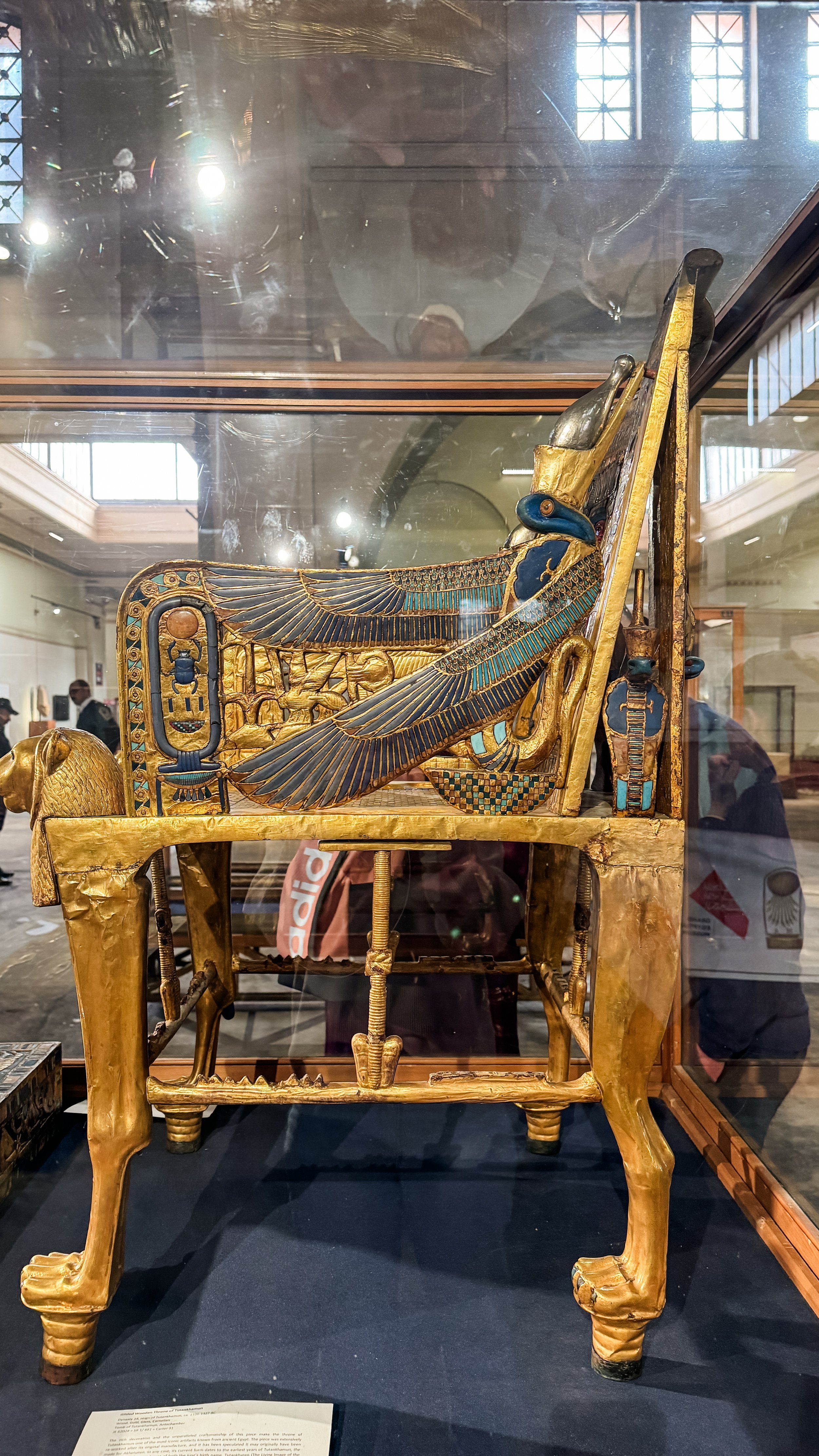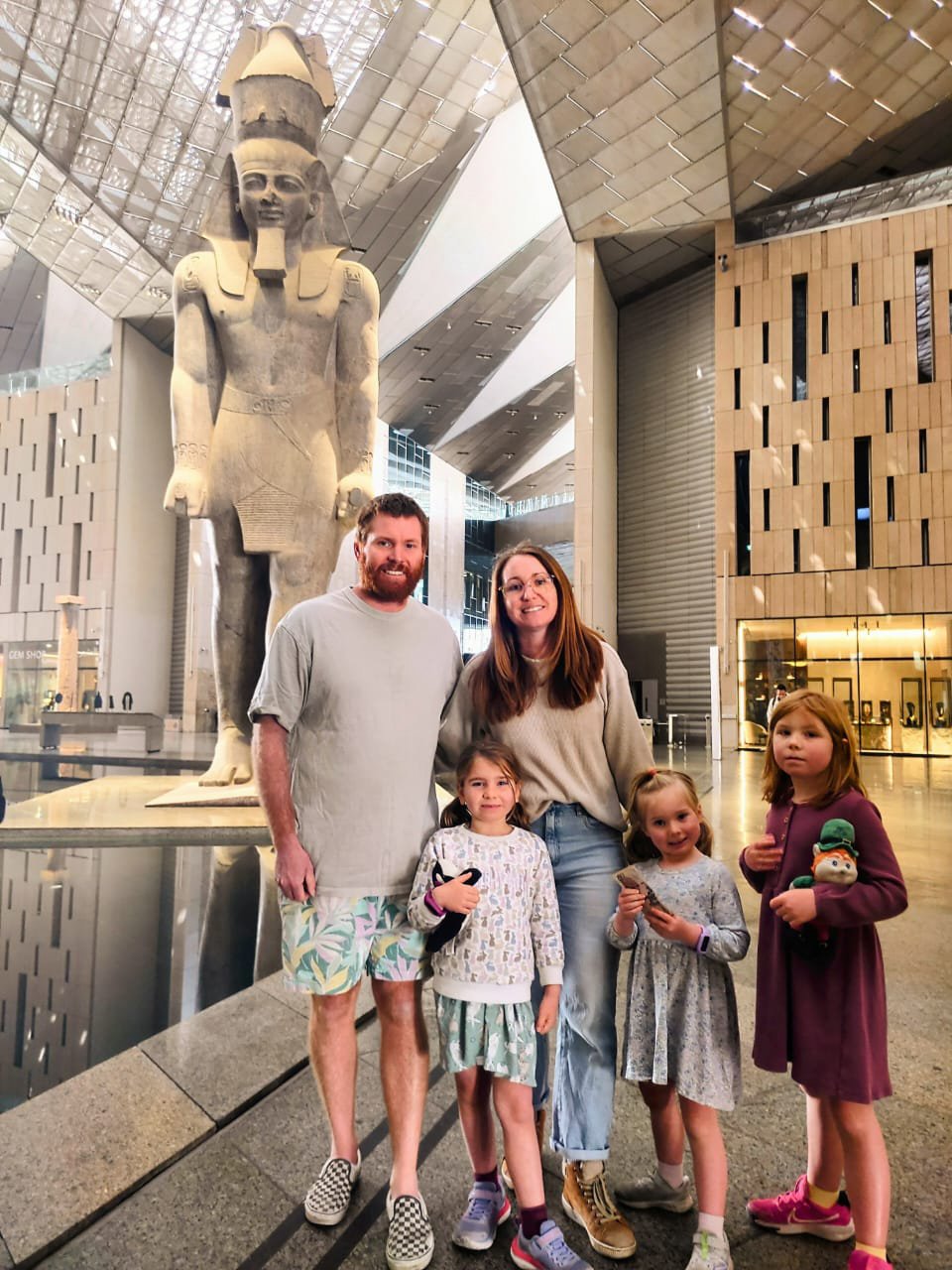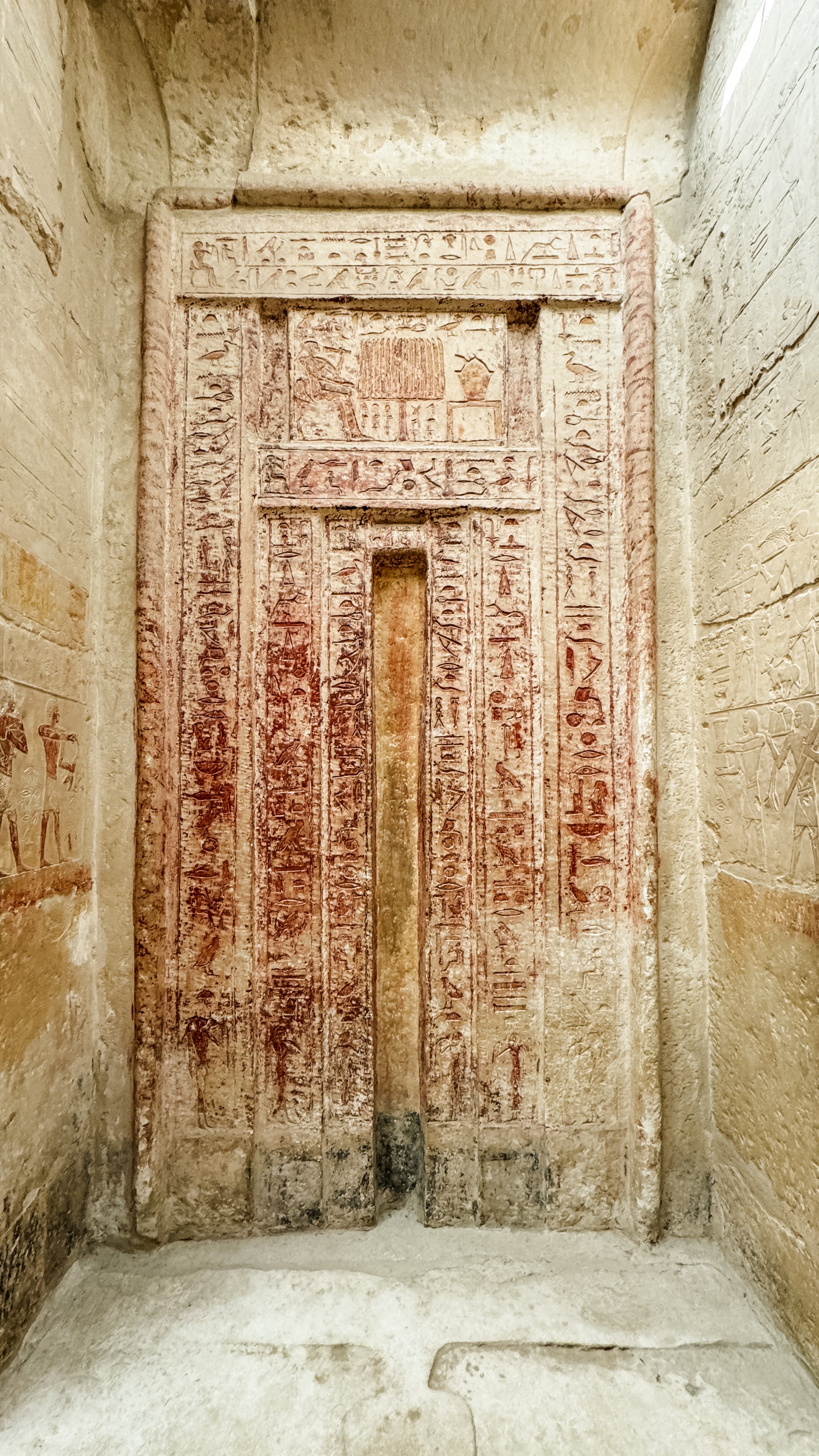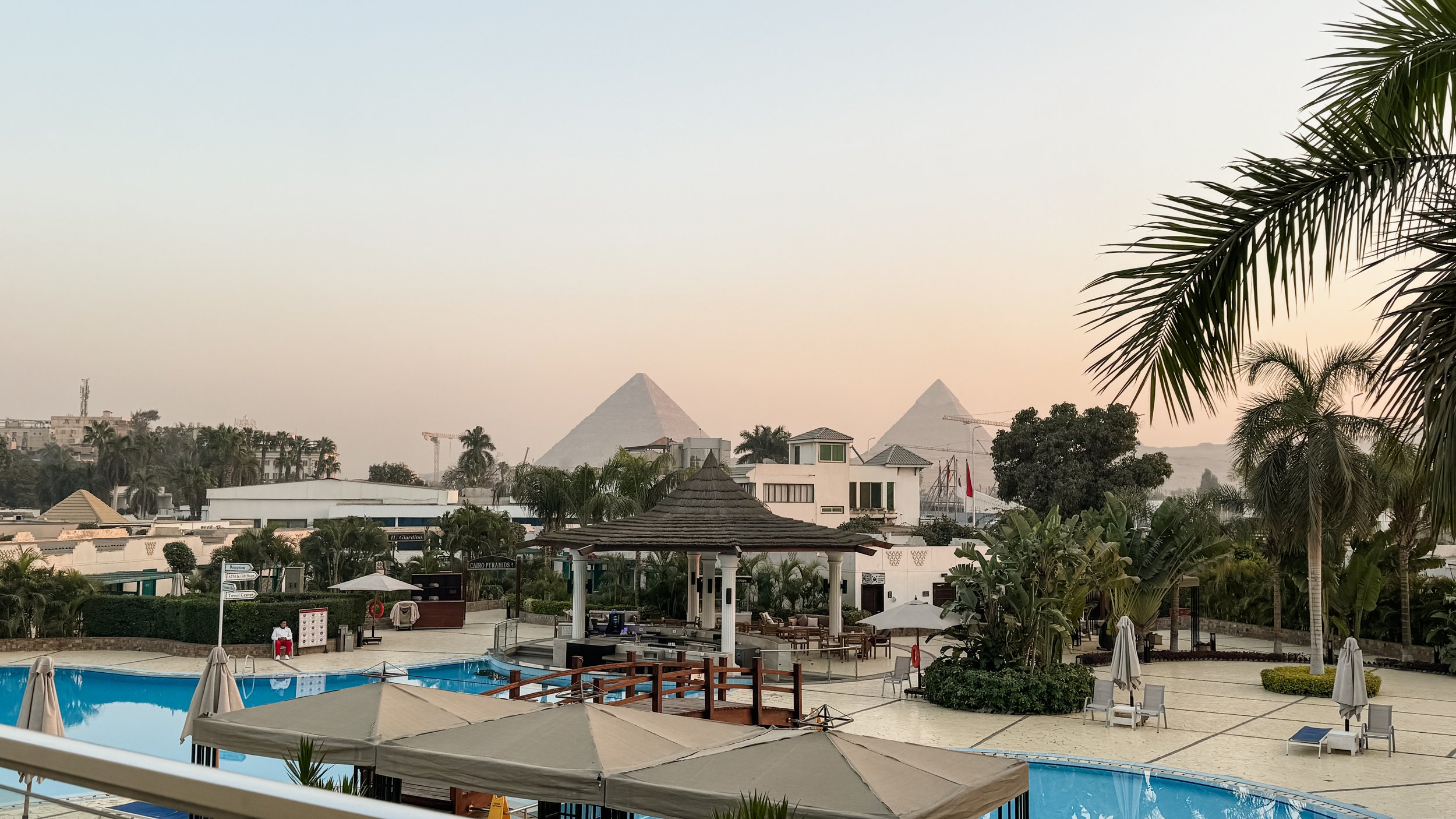After our full day of pyramids, our second day in Cairo was all about museums, filled with visits to the Egyptian Museum in Cairo and the brand new Grand Egyptian Museum.
The Egyptian Museum in Cairo
THE EGYPTIAN MUSEUM IN CAIRO
The Egyptian Museum in Cairo (EMC) was first constructed in 1902 and houses over 150,000 artefacts inside the beautiful historic building. The museum sits in the downtown area of Cairo, right on Tahrir Square, the site of the major protests of the 2011 Egyptian Revolution.
We did a bit of a whirlwind tour through the museum, but we still saw some of the most impressive pieces like the treasures of Tutankhamun’s tomb, including the golden death mask (it’s prohibited to take photos of it)
Statue of Amenhotep III and Tiye
Sphinx in the entrance hall
The colossal statue of Amenhotep III and Tiye in the entrance hall of the museum are absolutely awe inspiring. Including their daughter Princess Henuttaneb, the monolith statue is the largest known dyad ever caved and originally stood in Mediate Habu in western Thebes (modern day Luxor).
I was really interested to see more false doors (you can read more about my new found fascination with false doors in my previous post from our visit to Saqqara) and I loved seeing the statues of Pharaoh Akhenaten, who, in my opinion, is the most fascinating and mysterious Pharaoh. He introduced his own short lived monotheistic religion and was possibly the father of Tutankhamun
Tutankhamun’s Golden Throne
False Door
Statue of Pharaoh Akhenaten
We were surprised at how crowded this museum was, even though we arrived at opening time. Luckily Tarek suggested we head to the Tutankhamum section on the upper levels before the rest of the tour groups defended upon this area. Due to it’s age and magnitude of the huge collection, the Egyptian Museum had more of the feel of an old warehouse rather than a world class museum. Which is why I was so impressed to visit the brand new Grand Egyptian Museum afterwards.
Front exterior of the GEM
THE GRAND EGYPTIAN MUSEUM
The Grand Egyptian Museum is simply incredible; absolutely state-of-the-art. It’s situated right next to the Giza Plateau (and actually across the road from the Steigenberger Pyramid Cairo Hotel where we stayed) and it’s not even officially opened yet. The GEM complex is offering limited access to selected areas to test the readiness of the site ahead of the offical opening.
Statue of Ramses III
Inside the GEM
The construction of the Grand Egyptian Museum has been in the works since 2002 and the main contract for the design of the museum was awarded to an Irish firm after an extensive international competition.
The enormous 3200 year old statue of Ramses II that stands in the front hall once stood in a traffic circle known as Ramses Square in Cairo, but has been relocated to the musuem to preserve it against it from traffic polution.
Eventually, a large portion of the Egyptian Museum of Cairo will be transferred to the Grand Egyptian Museum, including close to 5000 treasures from Tutankhamun’s tomb. It’s location, in close proximity to the Pyramids of Giza, will make sightseeing in Cairo so much more efficient. The view from the museum out towards the pyramids is amazing! So beautifully framed by the architecture of the museum.
And not only that, there is a new international airport under construction, located in Giza - The Sphinx International Airport. And there is a new monorail in development that will link Cairo Airport to the Pyramids of Giza. Visiting Cairo will be so streamlined in years to come!
Inside the Grand Egyptian Museum
The view out to the Pyramids
We felt so privileged to be able to visit the Grand Egyptian Museum before it was officially opened and we were so impressed by the sheer scale of it. It feels so vast and spacious - a very welcome upgrade from the Egyptian Museum of Cairo, which has stood the test of time but felt like it was buckling under the sheer volume of artecfcts and daily visitors.
And extra note: both museums do have areas designed for children. The Childrens Museum at the GEM wasn’t opened yet and we didn’t get a chance to see the childrens area in the basement of the Egyptian Museum. But I’d recommend looking into it of you’re traveling with kids.


































































